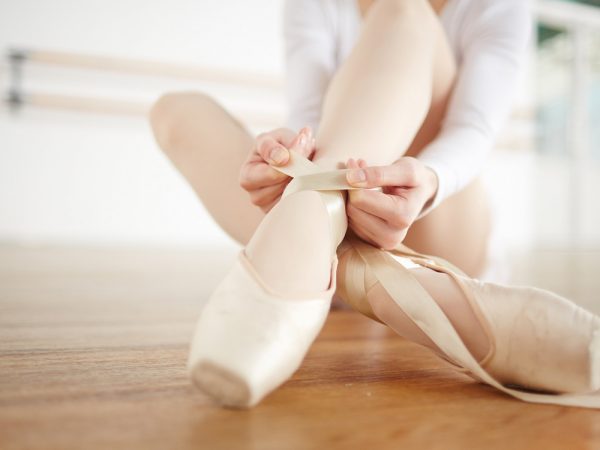13
Jan

Ballet shoes, often known as ballet slippers, are light shoes featuring thin soles for optimal flexibility. They are tightly fitted to the foot and fastened with elastic to provide optimum safety for dancers. If you’re just starting out and are unsure about which ballet shoes to buy, you’ll undoubtedly benefit from a few pointers from a simple guide to dance shoes. Finding the appropriate ballet shoe is critical if you want to keep your feet healthy, improve your technique, experience as little discomfort as possible.
Ballet was first performed by women in 1682 when ballet shoes still had heels. These shoes were delicate and quite expensive, fashioned of high-quality silk with soft leather soles. Years later, in the mid-18th century, famed Paris Opera ballet dancer Marie-Annie Camargo led the path for all dancers by removing the heels from her dancing shoes.
Later on, Charles Didelot continued the tradition and practice of using flat ballet shoes and was credited as the predecessor of classical pointe shoes. By eliminating the heels, ballerinas were able to perform jumps and various other tricks. Ribbons were then used to tie these flat-bottomed dancing shoes to the feet. He also put materials to the front so that ballerinas could dance on tiptoe. The issue with this design is that it lacks the necessary structural support to safeguard the dancer’s feet from harm. After all, they were only satin dance slippers with a leather outsole.
The material of ballet shoes is one component that might affect a dancer’s performance. They are composed of a variety of materials, including canvas, leather, and satin. As a result, ballerinas make it a point to pay close attention to the structure of their footwear, so you should make an effort to consider this part of the shopping for the ideal pair of ballet dance shoes.
Canvas ballet shoes are simple to clean and maintain. After each usage, simply put it in the washing machine to ensure clean footwear every time. These lightweight canvas shoes fit the foot well, emphasizing the lines and shape, and are ideal for novices. However, they don’t last long and can rapidly exhibit wear and tear from regular usage.
This isn’t the case with leather ballet dance shoes. It is a pretty durable material that aids in the strengthening of the dancer’s feet and ankles. It’s more expensive than canvas, but it allows you to wear them for a longer period of time, saving you money in the long run. It also requires time to break in before entirely adapting to your feet.
The satin is the most appealing and delicate material out of all three. As a result, satin ballet shoes are only worn by dancers on rare occasions, or they’re worn only for certain performances. These shoes are typically available in light-pink tones and colours.
A full-sole ballet shoe is ideal for novice dancers because it gives the necessary support and stability. In fact, even those with a bit more expertise choose to wear this sort of shoe. The ballerina shoe features a whole leather sole that extends the entire length of the shoe. Most dance teachers recommend this style, particularly for girls aged four to seven, to assist with increased foot strength.
Ballet shoes with a full sole provide the traction and resistance required by these small dancers’ feet. It is lightweight and flexible footwear that is easy on the feet and helps dancers move about the dance floor with ease. Full-sole shoes, which are commonly worn in the early stages of dance instruction, give outstanding balance while also increasing strength in the dancer’s instep. A full-sole design provides enough arch support, requiring the dancer’s foot and muscle to work.
The pit-sole ballet dance shoes contain distinct heel and toe pads made of abrasive materials for grip, dividing them into two halves, thus the name. Because the shoe’s midsection lacks support, the bottom of each sole is made of soft materials to protect the foot. This design makes the shoe flexible, reducing the possibility of injury. Because there is no support, the dancers may bend and point their feet, accentuating the arch’s curvature.
Students with greater expertise and training are more likely to wear this sort of shoe. The split-sole design enable dancers to perform cleaner footwork and techniques with ease, which is essential during competitions and practical exams. Dancers who use these shoes have better balance and confidence as they work on developing their spins and movement.
It is critical to examine the elastics of the shoes for ballet upon buying. This is the material that ensures the shoe stays on your foot. There are, however, some that do not have any elastics at all which are great since they allow dancers to sew the correct elastics on their feet for the right personalized fit. There is no right or wrong answer here, but if you want a personalized fit on your shoes, avoid those with pre-sewn elastic.
Ballet shoes had traditionally been pink, which meant that non-white dancers had to paint make-up onto their shoes when dancing with bare legs. Eric Underwood, a Royal Ballet soloist, grew unhappy with spending crucial warm-up time before shows and the markings left behind when he danced, so he used social media to vent his rage. As a result, a major ballet shoe maker saw the need for deeper skin tones and contacted him. The colour was named after the dancer Eric, but more significantly, it paves the path for broader inclusiveness in the ballet industry.
On the other hand, there’s a valid point to be made that most ballet shoes aren’t built or designed to match anyone’s skin tone. The traditional pink ballet shoe for female dancers does not match the skin tone of the great majority of dancers who use them. It’s designed to match the tights they all wear, providing the consistency of appearance that has been a mainstay of test work and well-known ballets for hundreds of years.